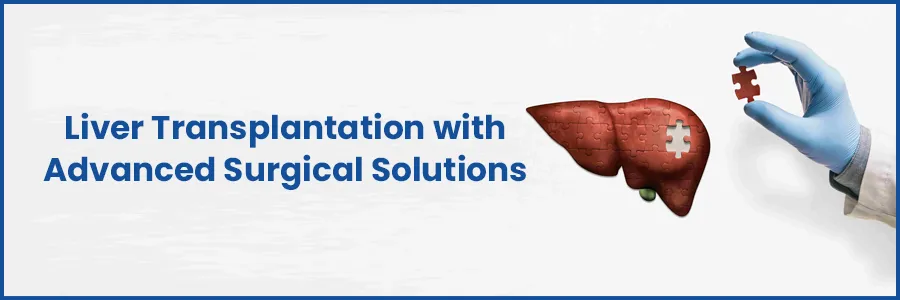- Cardiology 84
- Dermatology 45
- Endocrinology 33
- ENT 16
- Fertility 190
- Gastroenterology 78
- General-Medicine 81
- Gynecology 80
- Hematology 19
- Infectious-Diseases 33
- Neurology 52
- Oncology 34
- Ophthalmology 23
- Orthopedics 69
- Pediatrics 31
- Procedure 23
- Public-Health 144
- Pulmonology 59
- Radiology 8
- Urology 68
- Wellness 161
- Woman-and-child 77

Advanced Liver Transplantation Techniques
Liver transplantation is a complex procedure that can save the lives of patients with severe liver disease. Advances in surgical methods have significantly improved the outcomes and recovery times for these patients. In this blog, we will explore various liver transplant techniques, focusing on advanced, invasive, and minimally invasive methods
Advanced liver transplantation techniques encompass a range of innovations that have enhanced the safety and effectiveness of liver transplants. These techniques involve:
- Improved Imaging and Planning: Preoperative imaging techniques like 3D reconstruction and virtual surgery planning help surgeons to precisely understand the patient's anatomy and plan the surgery with greater accuracy.
- Enhanced Surgical Tools: Advanced surgical instruments, including robotic-assisted devices, provide greater precision and control during the procedure.
Liver Transplant Invasive Techniques
Invasive liver transplant techniques are traditional methods that involve significant surgical intervention. These techniques include:
- Open Surgery: The most common invasive technique where a large incision is made in the abdomen to access the liver. This method allows for direct visualization and manipulation of the liver and surrounding structures.
- Piggyback Technique: This method involves attaching the new liver to the recipient's existing hepatic veins, allowing for a potentially quicker recovery and less risk of complications.
Liver Transplant Surgical Techniques
Several surgical techniques are employed in liver transplantation, each with its own benefits and challenges:
- Orthotopic Liver Transplantation (OLT): This is the standard surgical technique where the diseased liver is removed, and the donor liver is placed in the same anatomical position.
- Living Donor Liver Transplantation (LDLT): A portion of a healthy liver from a living donor is transplanted to the recipient. This technique requires meticulous surgical precision to ensure both the donor and recipient recover successfully.
- Split Liver Transplantation: A single donor liver is divided into two parts, each transplanted into different recipients. This technique maximizes the use of available donor organs.
Ready to take control of your health journey? Book your appointment now and start your path towards wellness today!
Book an AppointmentMinimally Invasive Liver Transplantation Techniques
Minimally invasive liver transplantation techniques offer several advantages over traditional methods, including reduced pain, shorter hospital stays, and faster recovery times. These techniques include:
- Laparoscopic-Assisted Liver Transplantation: Surgeons use small incisions and a camera to perform the transplant, minimizing tissue damage and promoting quicker healing.
- Robotic-Assisted Surgery: Robotic systems provide enhanced precision and control, allowing surgeons to perform complex procedures through small incisions with greater accuracy and less trauma to the patient.
- Reduced Port Surgery: This technique involves using fewer and smaller incisions, further reducing the invasiveness of the procedure.
Conclusion
Advancements in liver transplant techniques continue to improve the outcomes and quality of life for patients undergoing this critical procedure. From traditional invasive methods to cutting-edge minimally invasive techniques, each approach offers unique benefits tailored to the patient's needs. Staying informed about these advancements can help patients and their families make better decisions regarding liver transplantation options.
Frequently Asked Questions
Eligibility depends on factors such as the severity of liver disease, overall health, and willingness to adhere to post-transplant care. A thorough evaluation is conducted to determine eligibility.
A living donor liver transplant involves giving the recipient a piece of a healthy liver from a living donor, sometimes a relative or close friend.
Donors can be living (partial liver) or deceased (whole liver). Living donors' livers regenerate to full size in both the donor and the recipient.
The recipient's diseased liver is removed, and the healthy donor's liver is implanted. Blood vessels and bile ducts are carefully connected to ensure proper function.
Graft rejection happens when the transplanted liver is attacked by the recipient's immune system. To stop this, immunosuppressive medicines are administered.
The longevity of a transplanted liver varies, but with advancements in medical care, many patients enjoy long and productive lives after transplantation.
In some cases, a second transplant may be possible if the first liver fails, but the success rate can be lower due to increased complications.
Modern surgical treatments, such as minimally invasive techniques and creative organ preservation strategies, help to enhance results and lower risks.
A liver transplant can cure certain liver diseases, but post-transplant care and medication adherence are crucial for long-term success.
The transplant team includes surgeons, hepatologists, nurses, social workers, and more. They work together to evaluate, prepare for, and support patients before and after surgery.
Yes, children can undergo liver transplantation, and there are specialized pediatric liver transplant programs and medical experts.
You can register as an organ donor in your country and spread awareness about the importance of organ donation to save lives.

- Cardiology 2132
- Dermatology 168
- Endocrinology 135
- ENT 97
- Fertility 217
- Gastroenterology 232
- General 478
- General-Medicine 1685
- Gynecology 169
- Hematology 85
- Infectious-Diseases 208
- Neurology 207
- Oncology 345
- Ophthalmology 65
- Orthopedics 187
- Pediatrics 83
- Procedure 72
- Public-Health 209
- Pulmonology 126
- Radiology 13
- Second Opinion 311
- Urology 294
- Wellness 600
- Woman-and-child 447
- Others 10217
Related Blogs
If you have any questions, please fill out the enquiry form or call us, and we will get back to you promptly.
040-68334455